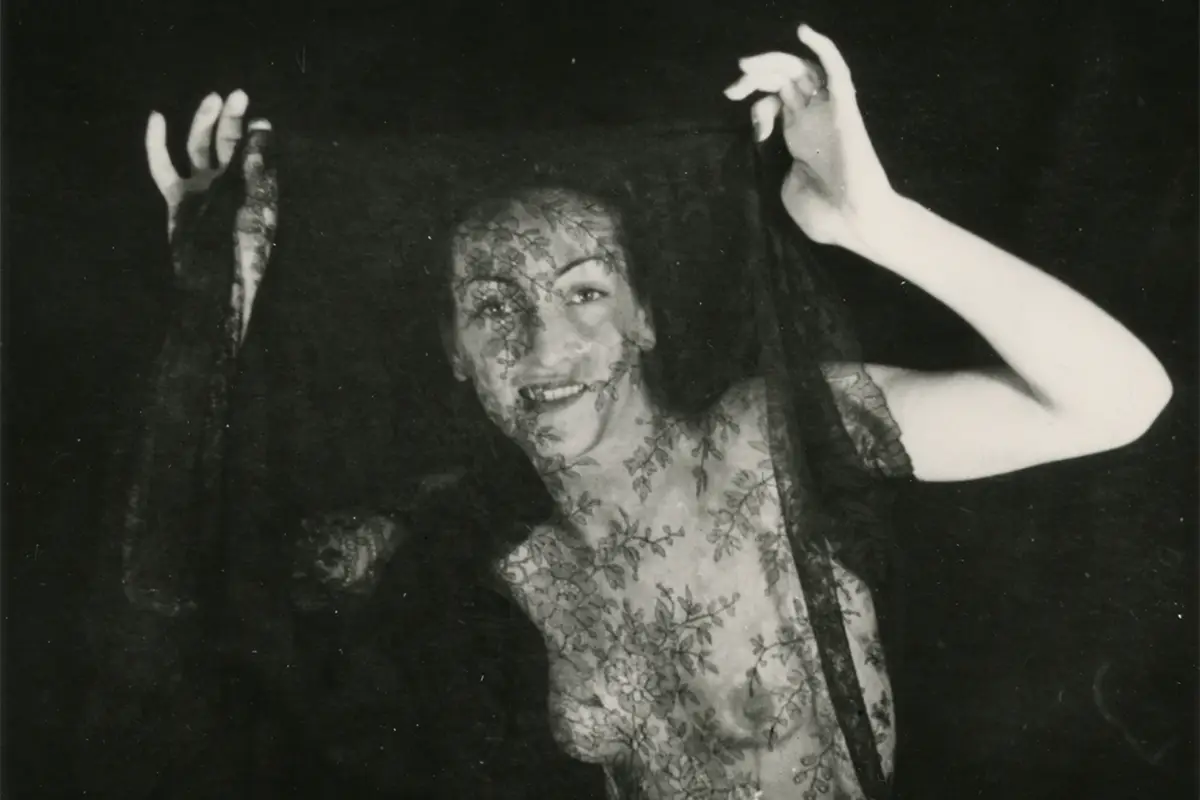The exhibition on the Swiss surrealist artist concludes at New York’s MoMA. An exhibition that restores dignity to a central female figure in the artistic scene of the twentieth century
Meret Oppenheim’s early years
Meret Oppenheim grew up in Basel, Switzerland, where she stayed until 1931. Her early influences were dreams and Gothic fairytales, which she expressed on paper as a teenager. Oppenheim dropped out of high school to pursue a painting career in Paris. There, a young artist joined the Surrealists members, primarily men. Although Oppenheim never pertained to one medium in art, her work was diverse and experimental. During her first years in Paris, Objects such as a fur-covered tea set and pair of white pumps on a silver plate made her stand out. Almost everything she created in her bedroom at Hotel Odessa, as Oppenheim preferred to work alone.
Another source of artistic expression and income was fashion. Oppenheim created designs for clothing and jewelry for such fashion houses as Schiaparelli and Rochas. That led her to experiment with new materials for her art pieces. Familiar objects had to become strange in her hands.
War times and the the Basel School of Design
Due to uncertain times, Meret Oppenheim returned to Switzerland in 1937, where she attended the Basel School of Design and received a formal art education for the first time. New skills changed her painting style, inspired mainly by mythology, and became darker and more profound. Oppenheim described that period as «a crisis of self-confidence» which continued for eighteen years. Nevertheless, Meret Oppenheim continued creating work, although a significant part was destroyed or left unfinished. Her mythological creatures often won’t have arms as an allegory to her inability to create freely or have dreamy vegetable heads as an artist described herself.
The influence of Jean Tinguely and Daniel Spoerri
The new chapter began in 1954 in Bern, Switzerland. Again, Oppenheim returned to repurposing found materials and objects in a new way. Still having the influence of 1930s French surrealists, Oppenheim added a taste of Swiss avant-garde, shaped by her artistic circle of friends, Jean Tinguely and Daniel Spoerri, who also recycled objects in their work.
Flora and fauna emerged in Oppenheim’s work; a squirrel tail would come out from the glass, a crocodile head appear in an antique watch, or Venus of Willendorf insights interpreted in a wooden figure with soiled straw from a chicken coop.
As mentioned earlier, Oppenheim paid attention to dreams which influenced her work. For example, her diaries describe moons and clouds as celestial beings. In addition, there are a series of magical abstract paintings and bronze sculptures with a made-up dreamy world of butterfly moons and flower clouds.
Meret Oppenheim’s personal exhibition
It was a series of twelve drawings describing over two hundred objects of Meret Oppenheim’s work through the years, along with selected things curated by Jean-Hubert Martin, director of Kunsthalle Bern, in 1984. Drawings were intended to serve as an open guide to curators for a traveling exhibition.
In «Imaginary exhibition», Oppenheim chose the most significant works, which sometimes weren’t in chronological order yet engaged by a similar idea. An artist was highly involved in the installation process and couldn’t name left-alone objects less critical.
Gender identity: Carl Jung and Meret Oppenheim
Meret Oppenheim had a strong idea about gender identity formed by Carl Jung’s writings – every person is male and female. In her interviews, she would always mention her gender perception through work. As it was highly influenced by natural materials and fauna, the serpent was one of the most highly used creatures. Oppenheim associated the snake with «women’s agency and the pursuit of knowledge» rather than Sigmund Freud, who interpreted the serpent as a phallic symbol.
Ideas from the past. Oppenheim’s art was about mortality and legacy
The last decade of Oppenheim’s art was about her mortality and legacy. One of the self-portraits, performed as a scull in ink, drops back to prehistoric times in a made-up title. Meret Oppenheim believed she channeled the ideas from «a long line of universal concepts that could be traced back to ancient times». A tiny butterfly in this portrait is another symbol of transformation that recurs in her work.
Oppenheim saw a statue of a saint turning over an hourglass in her dream at thirty-six. That was her half-life meaning. Then, on her seventy-second birthday in October 1985, she told friends she’d pass away before the first snow. So it happened.
Meret Oppenheim at The Museum of Modern Art in New York
Oppenheim made her way to the international art scene through teacup, saucer, and spoon covered in fur. Meret Oppenheim was twenty-two when Parisian surrealism art circle, and then The Museum of Modern Art in New York called Object a sensation.
The current exhibition is in the same museum, presenting Oppenheim’s work throughout her life. A series of twelve drawings featuring detailed instructions for her creations became the center of the exhibition. Oppenheim made those before her 1984 retrospective in Switzerland. Her work always had a sense of humor, self-investigation, repurposed objects, gender identity, and questions about society’s clichés.




















